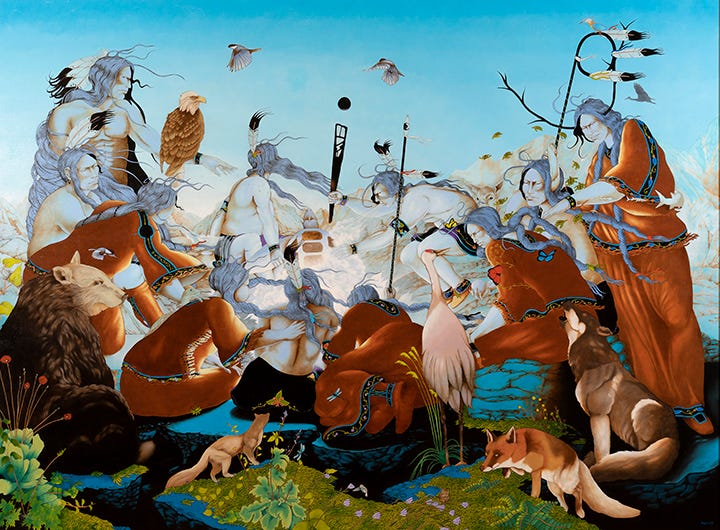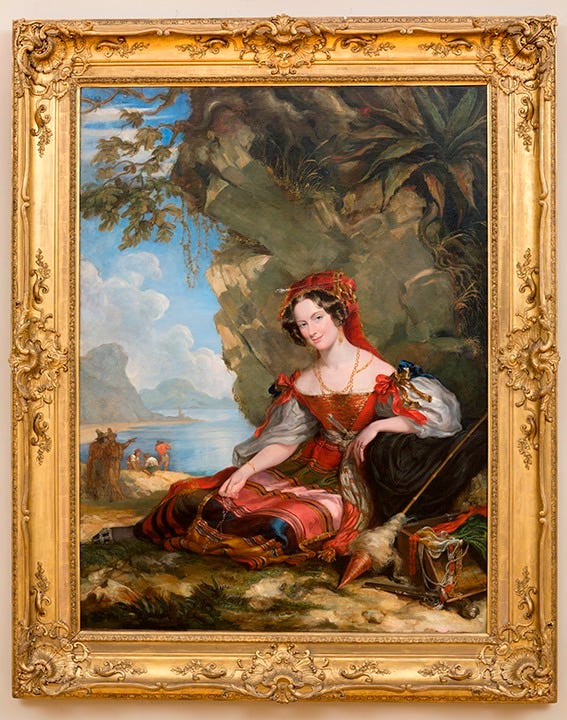Chazen: A center for art and learning in the heart of the UW-Madison campus
This great storehouse of art on University Avenue is undergoing major renovations that will allow the museum to rethink how it engages with the public.
As I’ve gotten more interested in art and art making in the past few years, I’ve been pleasantly surprised: It’s never been easier to be a life-long learner.
I’ve taken classes locally through the technical college and the Milwaukee Institute of Art & Design. I’ve picked up tips from pros near and far (Ian Roberts, Malcolm Dewey and Will Kemp are all excellent teachers), and I’ve taken a class in abstract expressionism through the Museum of Modern Art in New York, which fundamentally changed my approach to painting. Many of these classes are low cost or even free.
But there’s nothing like a museum for learning. The ability to see a masterwork up close, to see the actual brush strokes of a famous artist, to begin to understand their sense of perspective, light and color - there’s nothing like that experience.
And one of the best places to do that sits smack dab in the middle of the University of Wisconsin-Madison campus.
Chazen Museum of Art on University Avenue is a great storehouse of art and art items - 25,000 in all. And because it’s part of our great land grant university, it’s also part of the Wisconsin Idea, the notion of spreading knowledge and learning beyond the bounds of the campus.
I sat down with Berit Ness, Chazen’s chief engagement officer, and Kirstin Pires, head of communications, to chat about the museum’s unique role in art and art education. (The responses are from Berit, except where noted).

How do you see Chazen’s role as an educator on the UW-Madison campus?
We are the largest free art museum in the state of Wisconsin, and being here at the University of Wisconsin, which has deep roots in community engagement and scholarship through the Wisconsin Idea, means that knowledge is not meant to be confined within the walls of the university but rather spread throughout the state. … That very much connects to how I see my role as an educator. …
The kinds of conversations that we have in our galleries involve asking a lot of questions together. Many museums have started to move away from a kind of top-down authorial voice, particularly within a place of education, because we've learned that people don't like it as much. And it doesn't connect to the kind of back and forth that is inherent to places of learning.
This is more of a seminar style rather than a lecture hall classroom, where I want to hear the many perspectives of all of the different people who I'm looking at an artwork with. … Bringing in new perspectives is something that I aim to do as an educator, too, which starts with hospitality and service, so letting people know at the very start of a visit that this is going to be participatory, making sure that they feel welcome and feel like they have a seat. It's a very small but, to me, impactful change.
We've added new gallery stools across the museum, which allow people to take a seat with a work of art. It allows for a class to circle up and be in discussion in our galleries.
How does your audience breaks down. Obviously, you have a lot of students.
We are one of the key civic art museums in the city of Madison. … People will kind of migrate from the Capitol down State Street and find themselves here adjacent to Library Mall. And so we have a lot of people who are just visiting town, maybe have never been to Madison before. In addition to that, we have all of our students, university staff members, university faculty, and, of course, the Madison communities that come time and time again. When people look up the things to do in Madison on a weekend trip, Kirstin has made sure that we're on the list.
Tell me about the work that is going on next door? (where the original 1970 Elvehjem Art Center building is undergoing a major renovation)
The Elvehjem building was built in 1970, and our standards of what a museum needs have changed over the years. The exterior was starting to have some issues, so it's closed for a capital project. They are recladding the outside of it, putting new skylights on top of it, and insulating the building. When it reopens, it's going to be a really key moment for us because we are going to reinstall all 50,000 square feet of our permanent collection across both buildings with a completely different concept, with a completely different interpretation strategy. … We’ve done a lot of surveying and evaluations to ask: What do our visitors want? How many labels do they want? How long should the labels be? How much space do they want to sit? To the extent that we're able, we are trying to be really visitor-forward in the new reinstallation.
When will the work be completed?
We're hoping for fall of 2026.
Will multi-media play a major role in the new space?
It won't play the only role. I think some museums use it as the end-all, be-all, and I think many institutions are actually trying to peel back and be more strategic about how they deploy tech. With the new reinstallation, we will be integrating more opportunities for interactivity, for tactility, not just on a screen, but rather with actual materials. For example, a visitor may have just gone through a gallery on prints and printmaking. Wouldn't it be so great to then have a small space where someone could understand how a print is made, the different processes, feel a relief matrix, understand the intaglio? With the reopening, we're also hoping to partner with the Bloomberg Connects app. ... Google Translate is built in, which would allow for the museum's labels to all be accessible immediately to all the many languages that are embedded in that.
How else do you use the museum's collections in your educational mission?
Our collections are primary sources that are rich for student research and learning. One of the things that I love about the Chazen is that we have a couple of study room spaces, so that students, faculty members, really anyone who submits a form, can request to see an artwork that is not otherwise on view for their own teaching, learning, research, or broader practice. It makes the collection very active. We have over 25,000 objects in the collection - the museum's actually rather large, but we still only have finite gallery space. This adds to the life of the object and it gives it a real purpose. It’s thinking about the museum akin to the resources of a library.
The nice part about having a collection that is so vast as the Chazen's, spanning geographies, spanning millennia, is that it can also be a stable tool for teaching, learning, and engagement. I love special exhibitions, but they come and go. So it's really important to continue to have those resources on view, not just for our university-based audiences, but also to give access as a free museum to cultural materials from around the world to everyone.
Tell me about the history of the Chazen.
We were established in 1970, at that time, as the Elvehjem Art Center. But the university had been collecting artwork since its founding. The faculty across the university had been teaching with artwork since its founding. In fact, UW-Madison is the first university in the country to have an artist-in-residency program, with John Steuart Curry. There was all this really rich artistic practice, artistic collections, that had been happening since the 19th century. But it wasn't until 1970 that the museum was founded.
Kirstin: The original art gallery was in Science Hall, and when Science Hall burned, some artworks were lost. Another thing I find really interesting is that the desire to have an art museum was really all across campus. There are some wonderful quotes that put the need for an art museum above a new football stadium, above science buildings. Can you imagine that happening today? The opening was just, I think, two weeks after the Sterling Hall bombing. So there were a lot of interesting things going on during that time. The fencing and scaffolding around that building as it rose became a really interesting billboard and graffiti place for pretty important messages.

Finally, what are your favorite pieces in the collection?
Kirstin: It changes, but for a long time, it was Lady Caroline because we did a really deep dive into it, and I learned so much about the piece. Portrait of Lady Caroline Montagu in Byronic Costume, 1831, oil on canvas, by George Hayter).
Berit: It changes all the time. I think right now, one of my favorites is displayed on our mezzanine, which is a massive painting by the Wisconsin-based artist Rabbett Before Horses Strickland. Iskwaaj Nibi (The Last Waterhole: Creating a New World), 2018, oil on canvas. It's a work that when I bring in, honestly, a lot of K-12 groups, I'll start with that one, because there is so much to see. … It really unfurls slowly, especially with K-12 students. They might begin to describe some of the different animals they see. They might begin to describe that all of these figures all seem to be looking at a central space. It takes quite a while to see that there are little tiny turtles flying and floating in the composition. And it's such a joy to be able to describe to students that it's an artist who is Indigenous, as well as from Wisconsin.
Chazen Museum of Art, 750 University Ave., Madison, is open 10 a.m.-7 p.m., Monday-Friday; 11 a.m.-5 p.m., Saturday and Sunday; closed for campus holidays. Galleries in the Elvehjem building are closed during renovations. The museum is free.


